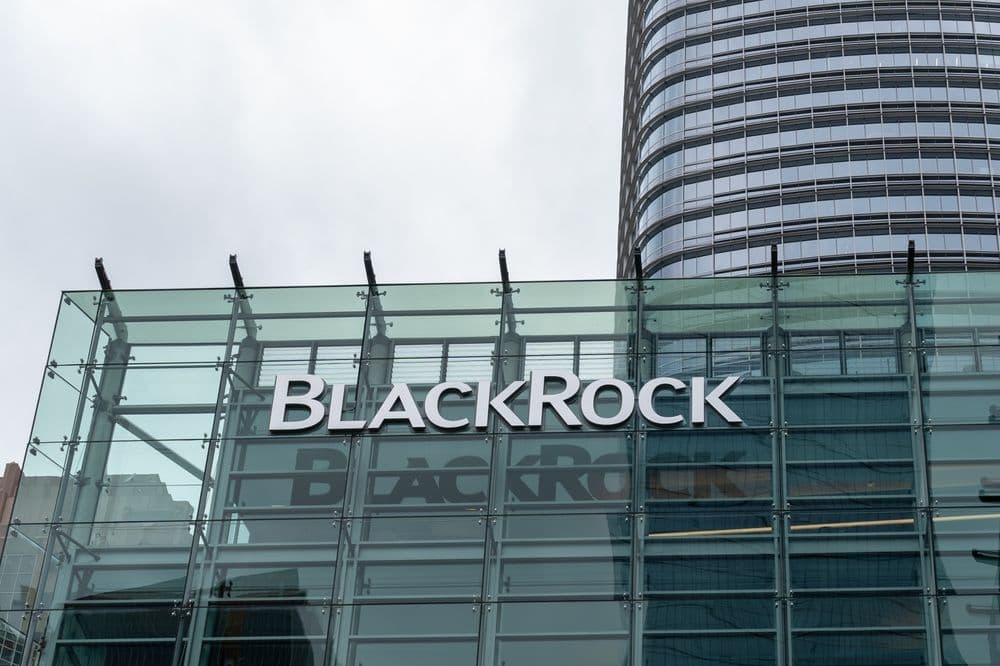BlackRock, the world’s largest asset manager with $11.6 trillion under management, has purchased $1.4 billion worth of Bitcoin over six consecutive days, with $250 million in BTC acquired on June 17 alone, according to Arkham Intelligence . The firm’s accumulation aligns with a major surge of net inflows - $639 million in a single day - into its flagship spot ETF, the iShares Bitcoin Trust (IBIT), outperforming Fidelity, ARK, and Bitwise funds throughout this period .
This buying occurred even as Bitcoin’s price fell approximately 5% to around $104,600, likely seen by BlackRock as an ideal buying opportunity in a volatile market. The result: IBIT now holds roughly 670,000 BTC, managing around $74.8 billion in AUM, representing nearly 3% of all Bitcoin in circulation.
Launched on January 11, 2024, IBIT holds the distinction of becoming the fastest ETF ever to reach $70 billion in AUM, achieving this milestone in just 341 days - surpassing the previous gold ETF record of 1,691 days. Over that period, IBIT cumulatively acquired more than 300,000 BTC, valued at approximately $67 billion based on today's prices. Today, IBIT ranks among the world’s largest Bitcoin holders - surpassed only by Satoshi Nakamoto’s estimated 1.1 million BTC holdings. This consolidation demonstrates a major redistribution of assets from mining pools and retail investors into regulated institutional platforms.
Why BlackRock’s Buying Matters Now
BlackRock’s aggressive acquisition approach reflects broader macro trends and strategic foresight:
- Buying the Dip – The timing aligns with Bitcoin's recent market decline. Large institutions like BlackRock have historically used price dips as entry points for accumulation.
- Institutional Acceptance – Spot Bitcoin ETFs gained regulatory legitimacy after the SEC approved them in January 2024. The shift marked Bitcoin’s transition into mainstream finance.
- Infrastructure and Distribution – BlackRock leverages its broad global reach, efficient ETF wrapper, tight spreads, and Coinbase Prime as custodian to offer a reliable and straightforward avenue for crypto investment.
“These ETFs simplify portfolio integration, remove tech barriers, and fit seamlessly into traditional asset allocations,” says a Barron's piece, reflecting broader industry sentiment.
Institutional Crypto Wave: Beyond BlackRock
BlackRock isn’t alone. Other major entities are embracing Bitcoin at scale:
- MicroStrategy, led by Michael Saylor, added $1.05 billion in BTC, doubling down on its treasury strategy.
- Global players like MetaPlanet (Japan) and The Blockchain Group (Europe) have increased their holdings, marking widespread institutional adoption .
- Crypto ETF inflows across the U.S. reached nearly $7 billion in May, driven by Bitcoin’s rally and investor confidence - signaling the strongest month since December 2024 .
The Bitcoin Investment Case: Hard Facts
Supply and Scarcity
Bitcoin operates on a capped supply of 21 million coins, with around 19.6 million already mined. Given that significant portions of BTC are lost forever, effective circulation is even lower, enhancing scarcity.
Portfolio Diversification
An academic study (Di Wu, Jan 2025) revealed that Bitcoin’s correlation with benchmarks like S&P 500 and Nasdaq has increased to 0.87 during key institutional events, shifting BTC’s perception from a fringe asset to mainstream portfolio component.
Macro Hedging
BlackRock’s internal strategy views Bitcoin as a potential hedge against fiat risks and inflation, similar to digital gold. Its scarcity, global availability, and resistance to sovereign control underpin its appeal ([cointelegraph.com][2]).
From ETF Mechanics to In-Kind Redemption
IBIT and other spot Bitcoin ETFs operate using regulated custodians who hold actual BTC, while fund shares trade on public exchanges like typical equities. In January 2025, Nasdaq proposed allowing in-kind redemptions for IBIT - enabling authorized participants to redeem ETF shares directly for BTC instead of cash, reducing costs and capital gains distributions. This move would enhance operational efficiency and price stability.
BlackRock’s ETF push extends beyond U.S. borders. In March 2025, it launched its first Bitcoin ETP in Europe (Switzerland, Germany, France), reducing fees under the EU’s MiCA framework and using Coinbase as custodian. Meanwhile, the UK’s FCA is considering lifting its ban on retail access to crypto ETPs, signaling global regulatory momentum.
The Regulatory Landscape
Bitcoin ETF approval followed years of SEC resistance, initially rejecting proposals since 2013. However, January 2024 marked a turning point when 11 spot ETFs were approved - ushering in the current institutional wave.
The regulatory tone has improved significantly since the 2025 change in the U.S. administration, with previously aggressive lawsuits against crypto firms dropping, and industry sentiment warming .
If BlackRock maintains its buying pace, IBIT could soon surpass Satoshi’s holdings entirely - an estimated milestone if Bitcoin hits $150,000 by next summer . Meanwhile, investor focus is shifting toward:
- Ethereum spot ETFs, which have already attracted hundreds of millions in inflows .
- Broader crypto asset offerings like Solana and XRP as part of a digital asset ETF expansion.
- Enhanced market infrastructure, including options markets, custody solutions, and in-kind redemptions.
These developments are expected to deepen market liquidity and price efficiency, reinforcing crypto’s legitimacy in the institutional world.
Final thoughts
BlackRock’s unprecedented Bitcoin acquisition over six days, coinciding with its ETFs holding more than $74 billion in BTC, marks a paradigm shift in the investment landscape. Bitcoin is no longer a fringe or speculative asset - it is evolving into a strategic portfolio component embraced by mainstream institutions.
From a macro perspective, Bitcoin’s scarcity, diversification potential, and digital innovation make it a compelling investment. Structurally, ETFs offer a trusted, regulated gateway that reduced risk and technical barriers for investors.
With improved regulatory clarity and growing infrastructure support, the next chapters of crypto’s institutional adoption look promising.

